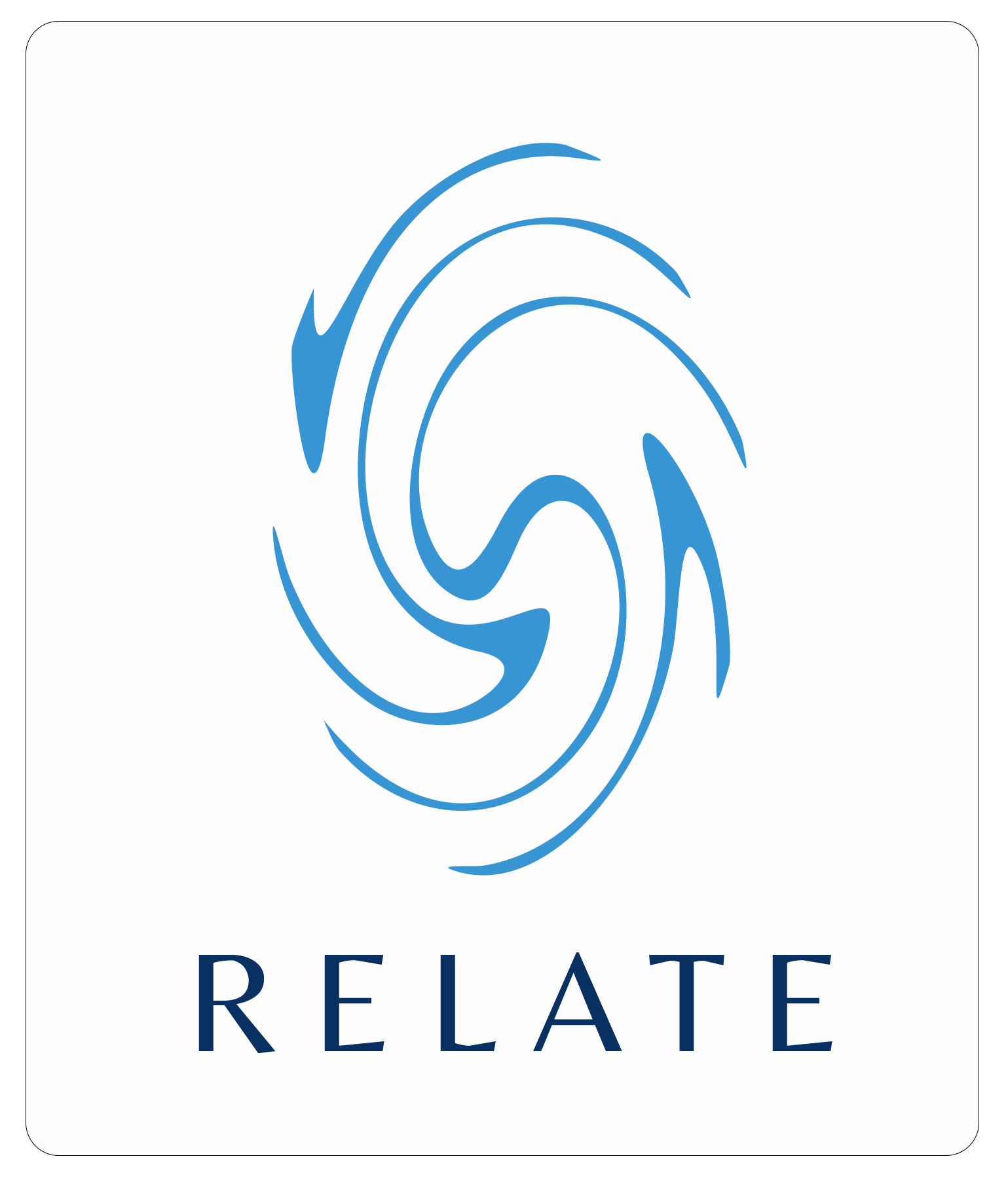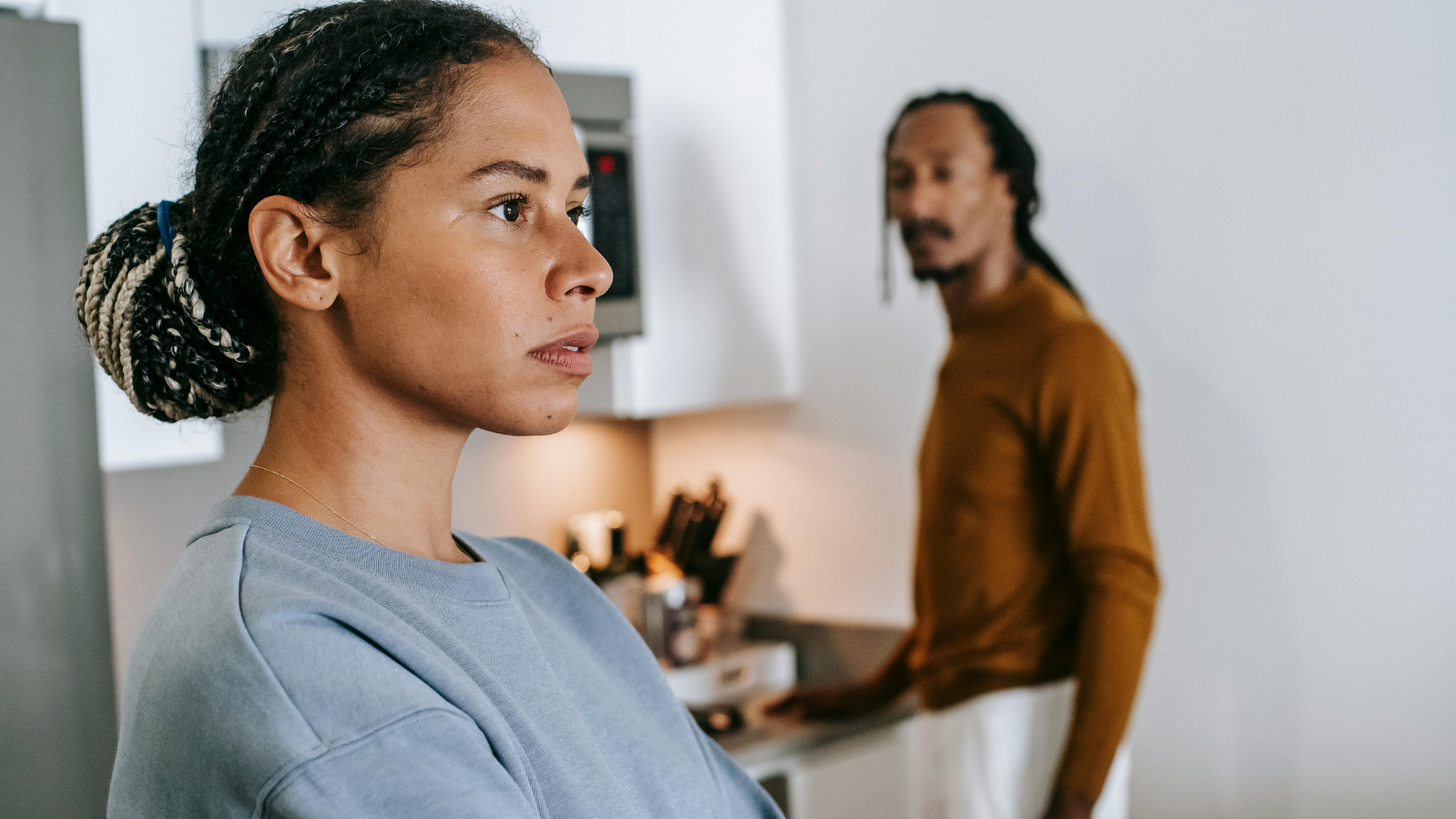But here’s the thing—most communication problems aren’t about what’s being said. It’s about how it’s said. When conversations turn confrontational, defenses go up, and real connection gets lost.
So, how do you break the cycle? You learn to master the art of non-confrontational communication. At Relate we use Presence Oriented Relationship Therapy to teach clients to identify the 4 Relationship Killers: Defensiveness, Criticism, Stonewalling and Contempt - which diffuses conflict. Then we teach the Presence Bridge which is a step by step strategy to reconnect.
Relate's School of Love has courses to improve communication and stop fighting.
Why Communication Breaks Down in Relationships
Ever had a conversation that went from 0 to 100 in seconds?
One moment, you're talking about something small, and the next, you're in a full-blown argument.
Here’s why:

Core Principles of Non-Confrontational Communication
Mastering non-confrontational communication requires shifting the focus from winning the argument to understanding your partner.
*Pro Tip: It's common for couples to struggle with communication problems or conflict patterns for a long time before getting help. Often they'll read some books or taken classes, but things don't get better. Patterns can be deeply ingrained and need a relationship therapist. Most couples can work through communication and conflict patterns in 8-12 sessions with experienced couples counsellors.
View our team or relationship therapists here.
Here's How - You Cross the Bridge

How the Presence Bridge Model Works
Invite & Accept
Start by inviting your partner to share their thoughts and emotions. Acceptance opens the door to vulnerability and trust.
Send & Mirror:
Reflect back what you hear with curiosity and care. Mirroring ensures that both partners feel truly heard before moving forward.
Confirm Empathy:
Acknowledge your partner’s feelings by confirming their emotions. This shows that you understand their perspective, (even if you don’t agree).
Deepen & Validate:
Go deeper by validating emotions and experiences. Validation reassures your partner that their feelings matter, strengthening the connection.
Transition to Response
Once both partners feel understood, it's time to move toward resolution. Responses become more compassionate and solution-focused after walking through the bridge of empathy.
If you are a relationship therapist and want to learn how to use this theory in your practice, visit Presence Oriented Relationship Therapy (PORT).

Why Presence and Appreciation Matter
At the heart of the Presence Bridge Model lies presence and appreciation. When partners remain fully present, they create a safe emotional space where appreciation naturally blossoms. This cultivates trust, emotional safety, and deeper intimacy over time.
Transform Conflict into Connection
Whether you're navigating a difficult conversation or simply looking to strengthen your connection, the Presence Bridge Model helps couples move beyond surface-level discussions and into meaningful dialogue that fosters lasting understanding.
Ready to Build Stronger Bridges in Your Relationship?
Obviously this takes more work than reading a website.
Do you want Communication and Conflict Resolution Self Study Courses?
Practical Steps to Improve Communication Without Confrontation
Want to transform how you communicate? Follow these proven steps:
1. Set the Right Environment for Discussions
Timing matters. Don’t start serious conversations when emotions are high. Find a calm, neutral time to talk.
2. Name the Emotion Behind the Conflict
Identify and express the underlying emotion driving the disagreement. Pro Tip: Anger is a defense emotion - underneath is normally some kind of fear or sadness.
“Under my anger—I’m actually feeling disconnected and hurt.”
3. Focus on the Present, Not the Past
Bringing up old wounds derails progress. Stay focused on solving the current issue.
4. Agree on a Pause Button
If emotions escalate, take a time-out. Come back when you’re both calmer.
5. Get Help if you need it
If you keep getting stuck this is where a therapist can help - having somone who is not invested in the fight can help you hear each other.

Relationship Communication Pitfalls and How to Overcome Them
Even with the best intentions, communication can go sideways. Here’s how to stay on track:
Pitfall 1: Stonewalling or Contempt
When one partner shuts down, it leaves the other feeling abandoned. Break the silence by gently asking, “Can we talk about what’s going on?”
Pitfall 2: Defensiveness and Criticism
If you feel yourself getting defensive, pause and reflect: “Am I trying to understand or just prove my point?”
Pitfall 3: Invalidating Feelings
Dismissing your partner’s feelings creates emotional distance. A simple “I hear you” can make all the difference
Success Stories: Real-Life Couples Who Transformed Their Communication
Meet Ben and Sarah.
They came to us after years of arguing over small things that escalated into major fights. Sarah felt unheard, and Ben felt constantly criticized. They both wanted to save their marriage but felt stuck.
The Turning Point?
They learned to replace confrontation with curiosity. Ben practiced active listening, and Sarah started expressing her needs without blame. Within weeks, their conversations became less defensive and more constructive.
“We finally feel like we’re on the same team again.”
Ben and Sarah are an example of a couple who improved their relationship with theories created by Sue Johnston. Explore how Sue Johnson’s Emotionally Focused Therapy (EFT) helps couples enhance emotional connection and improve communication.
Blog posts

Conflict Resolution Strategies for Couples: Turning Fights into Discussions
When Every Talk Turns into a Ticking Time Bomb It starts with a small comment: "You left the dishes again." What follows isn’t a solution, but a storm. Sound familiar? For many couples, minor issue...

The Impact of Betrayal on a Relationship and How to Heal
When Trust Shatters: Understanding Betrayal in Relationships Most people associate betrayal with affairs. And yes, infidelity can be a devastating rupture in any relationship. But betrayal is not j...

How to Communicate Effectively with Your Partner: Tips and Techniques
Bridging the Communication Gap “Why do we keep having the same argument?”—it’s a question I hear from couples regularly at Relate. Often, both partners truly think they’re communicating clearly. Ye...
Ready to Transform Your Relationship? Let’s Get Started!
You don’t have to stay stuck in destructive communication patterns. With the right tools and guidance, you can build a relationship where both partners feel heard, valued, and connected.
Book a Call Back Today and take the first step toward lasting change.
Frequently Asked Questions about Communication and Conflict Resolution
Navigating the twists and turns of marriage can sometimes feel like assembling IKEA furniture without the manual—especially when it comes to communication and conflict resolution. Let's dive into some of the most common questions couples have, sharing insights, personal anecdotes, and actionable steps to help you and your partner build a stronger connection.
How can we improve communication in our marriage?
How can we improve communication in our marriage?
If you’ve ever had a conversation that started with “We need to talk…” and ended with one of you walking out of the room, you’re not alone. I used to think that just talking more was the answer, but I’ve learned it’s more about how we talk.
To get started:
- Face each other - talking over your shoulder about important issues triggers threat responses for mammals.
- Put your phone down—it communicates that your partner is the priority
- Express appreciation regularly. ("Thanks for doing the dishes" builds your emotional bank balance that helps when things get tough")
- Make time for weekly check-ins that aren’t just about logistics (Our Relationship Check in exercise will help you do just this).
The “5 Secrets of Relationship Champions” gives exercises and live demo's to make this simple.
What strategies help in resolving recurring conflicts?
What strategies help in resolving recurring conflicts?
Ever feel like you're having the same fight over and over again? (Gottman's research indicated that 2/3rds of fights are unsolvable e.g. lateness, spending, tidiness). Happy couples talk about issues in ways that enhance the connection and help their partner feel seen.
Try this:
- Listen for your partner's longing e.g. a serene environment, to feel special or celebrated.
- Set ground rules—no yelling, no interrupting, no dragging up 2012.
- Don't put yourself down your partner wnts the house tidier - nobody is bad it's just a preference - how do you show kindness and love to each other in this area.
- If you keep getting stuck and particularly if your parental role models struggled with this too you might find therapy could give you some more options.
How do we handle disagreements when both believe they're right?
How do we handle disagreements when both believe they're right?
You might both be right. Logic and Emotion are not opposites just different lenses
Here’s what works:
- Focus on shared goals so everyone “wins.”
- Learn to say “You might be right” (Pro Tip if you think they 100% wrong you are probably triggered and not listening well because of it).
- Know when you are triggered - acknowledge it and take a break.
What role does empathy play in marital communication?
What role does empathy play in marital communication?
One of the biggest turning points in many marriages is when a partner stopped trying to fix everything and just says, “That sounds really hard.”
Empathy doesn’t mean you agree—it means you care enough to step into your partner’s world.
- Try listening without jumping to solutions.
- Reflect back what you hear: “So you felt ignored when I didn’t respond?”
- Respond gently, even if you’re upset.
It’s amazing how far a little “I get it” can go. In fact research shows this is how we build trust in a relationship - empathy builds trust that you care about your partner.
How can we rebuild trust after a major argument?
How can we rebuild trust after a major argument?
We’ve all had those fights. The kind where something’s said that can’t be unsaid. Rebuilding trust takes time—but it’s doable.
- Start with a real, vulnerable apology (no “I’m sorry you felt that way”).
- Talk about what led up to the blowup—not just what happened.
- Create clear boundaries to avoid going down that road again.
If that little voice in your head still says “Can I really trust them?”—therapy can help you rebuild connection from the inside out.
Is it normal to have frequent small disagreements?
Is it normal to have frequent small disagreements?
Totally. Disagreements are like pimples: annoying, normal, and sometimes a sign you need to wash your face (aka talk things through).
What matters most is:
- How often you fight.
- How intense things get.
- Whether repair happens afterward.
If small stuff feels big all the time, couples therapy can help cool things down and reset your patterns.
How do we deal with totally different communication styles?
How do we deal with totally different communication styles?
Ever feel like you're speaking two different languages? You're all about heart-to-hearts, while your partner would rather shoot off a quick text and call it a day. It's frustrating, right?
Here’s how we stopped going in circles and started actually connecting:
Some people need time to think. Others need to talk it out now. Neither is wrong—but it helps to know what you’re working with.
Maybe deep convos happen in person, but everyday stuff gets handled over text or notes. Flexibility beats fighting every time.
It’s a tool we use to step into each other’s emotional space—so we’re not just hearing each other, we’re feeling heard.
The goal isn't to become someone you're not. It's about finding your rhythm together so communication feels less like a tug-of-war and more like teamwork. (Look at our self paced communication course)
What are effective ways to discuss sensitive topics?
What are effective ways to discuss sensitive topics?
Money. Sex. Parenting. These conversations can make anyone sweat. But you don’t have to dread them.
Start here:
- Choose the right time (not at bedtime).
- Begin by asking, “Can I share something that’s been on my heart?”
- Focus first on listening to understand, not defend.
- Focus on how can we both win in this.
The best talks we’ve had started with curiosity, not a lecture.
How can we prevent misunderstandings from escalating?
How can we prevent misunderstandings from escalating?
A lot of our worst fights started because one of us assumed something the other never meant. Sound familiar?
To de-escalate:
- Clarify intentions early: “Just checking—did you mean…?”
- Stay curious instead of getting defensive.
- Imagine how your best friend would interpret it—it softens your lens.
Little tweaks can prevent big blowups.
If you want to see how misunderstandings blow up into fights - Look at our infographic 'Understanding Relationships.'
What impact does non-verbal communication have?
What impact does non-verbal communication have?
Let’s be real—your partner knows when you’re mad, even if you say, “I’m fine.” Your body says it all.
Keep in mind:
- 93% of communication is non-verbal (tone + body language).
- Eye rolls? Crossed arms? They say more than your words.
- Match your body to your intention—if you’re trying to connect, show it.
Sometimes the best “I’m sorry” is in a hug or gentle tone, not a long speech.
How do we manage conflicts about finances?
How do we manage conflicts about finances?
Money talk used to give me hives. It wasn’t just about dollars—it was about values, security, and sometimes control. Once we finally sat down and talked openly (after many failed budgeting apps), things began to shift.
What helps:
- Have monthly “money dates” to check in on spending and goals.
- Be transparent about accounts, debts, and purchases.
- Talk about what money means to each of you. Is it freedom? Security? A source of anxiety?
- Talk about Debt/Income ratios and savings buffers - people have very specific needs in this area.
Money doesn’t have to be a fight—it can be a path to deeper understanding, safety and connection.
What if one partner avoids conflict while the other confronts issues directly?
What if one partner avoids conflict while the other confronts issues directly?
This one hits close to home. I’m the talk-it-out type, and my partner? Let’s just say... conflict avoidant. It took us a while (and one very quiet weekend) to realize we needed a new strategy.
Tips for balance:
- Schedule structured time to talk so it’s not a surprise attack.
- Use gentle start-ups: “I want to feel closer, can we talk about something?”
- Try the "Pursuers and Avoiders" course if you often feel stuck in this cycle.
Opposites can absolutely work together—it just takes a shared playbook.
How can we keep communication strong during stressful times?
How can we keep communication strong during stressful times?
When life gets chaotic—kids, work, illness—it’s easy to let connection slide. We use a metaphor at Relate that really stuck with me: your relationship is a boat, and it’s your job to protect it from the storm.
Here’s how:
- Prioritize daily emotional check-ins, even just 5 minutes.
- Share appreciation and encouragement often—it’s fuel.
- Watch this video on protecting your relationship boat: YouTube Link
Stressful seasons pass, but staying emotionally anchored keeps you together.
What are the signs of unhealthy communication patterns?
What are the signs of unhealthy communication patterns?
If you find yourself thinking “Here we go again,” during arguments—pay attention. I used to feel torn between wanting to express myself and not wanting to hurt my partner. That inner tug-of-war is real.
Orange flags to watch:
- Criticism - Defensive patterns
At low levels these are common - however they should be addressed by readjusting to a more gentle tone and by taking responsibility - and the issue should get addressed
Red flags to watch:
- Stonewalling—one partner shuts down and stays shut down.
- Contempt—sarcasm, eye-rolling, disrespect.
These two relationship killers make it impossible to solve problems collaboratively if they keep coming up relationship therapy can help find out what is causing the block so you can move forward.
How do we handle disagreements about parenting?
How do we handle disagreements about parenting?
Parenting differences are super common. Add in a kid with special needs, trauma, or ADHD, and the stress can skyrocket. What saved us was learning to unite before we tried to correct behavior.
What helps:
- Get clear on your shared parenting values.
- Talk disagreements out away from the kids.
- Book a consultation with Dr. Nike Franke for expert guidance tailored to your child’s needs.
You don’t have to agree on everything—you just need to move as a team.
Can setting boundaries improve our communication?
Can setting boundaries improve our communication?
Short answer: yes. Long answer: YES. We used to think “closeness” meant talking 24/7. But guess what? Even soulmates need space.
Try these boundaries:
- No serious convos in bed—protect your sleep and sex zone.
- Take breaks when things get heated (it’s not avoidance unless you don't come back, it’s wisdom).
- Respect each other’s time and energy.
Healthy boundaries aren’t walls. They’re doors—with doorknobs on both sides.
How do we deal with external family influences causing conflict?
How do we deal with external family influences causing conflict?
Ah, in-laws. External family conflict sneaks into marriage like a nosy neighbor. Most couples have to set some boundaries and stand united.
Here’s what works:
- Decide on what your family culture is going to be - take the good from your family and edit out the bad stuff.
- Agree ahead of time how you’ll handle difficult relatives.
- Use “we” language: “We’ve decided to do it this way.”
- Protect your partner from your family if necessary
- Protect your partner from their family if necessary
- Debrief after family gatherings to reconnect and reset.
You’re not being rude—you’re protecting your relationship’s front door.
What role does forgiveness play in resolving conflicts?
What role does forgiveness play in resolving conflicts?
Holding onto resentment is like drinking poison and expecting your partner to get sick. Forgiveness is messy but essential.
To start:
- Initiate a conversation - including if you know your partner is upset with you.
- Forgive to free yourself, not just your partner.
- Talk honestly about what hurt and what needs to change.
- If forgiveness feels impossible, therapy can help unlock the stuck places.
You don’t have to forget—but you can move forward.
How can we ensure both partners feel valued during disagreements?
How can we ensure both partners feel valued during disagreements?
Validation changed everything for this example: I didn’t need to agree with my partner to say, “I can see why you feel that way.”
Ways to help each other feel seen:
- Acknowledge their emotions: “That sounds frustrating.”
- Avoid sarcasm or dismissiveness, even if you're hurt.
- Ask, “Is there something I can do right now to help you feel heard?”
Respect in conflict is what keeps love safe.
What resources can help us improve our communication skills?
What resources can help us improve our communication skills?
When in doubt—learn it out. Communication isn’t something you either “have” or “don’t.” It’s a skill. And like any skill, it can be practiced.
Our go-to recommendations:
- The 5 Secrets, Escaping Fight Club, and our Communication Course from Relate’s School of Love.
- Couples counseling for personalized support.
You’re not broken—you’re just learning. Keep going.





